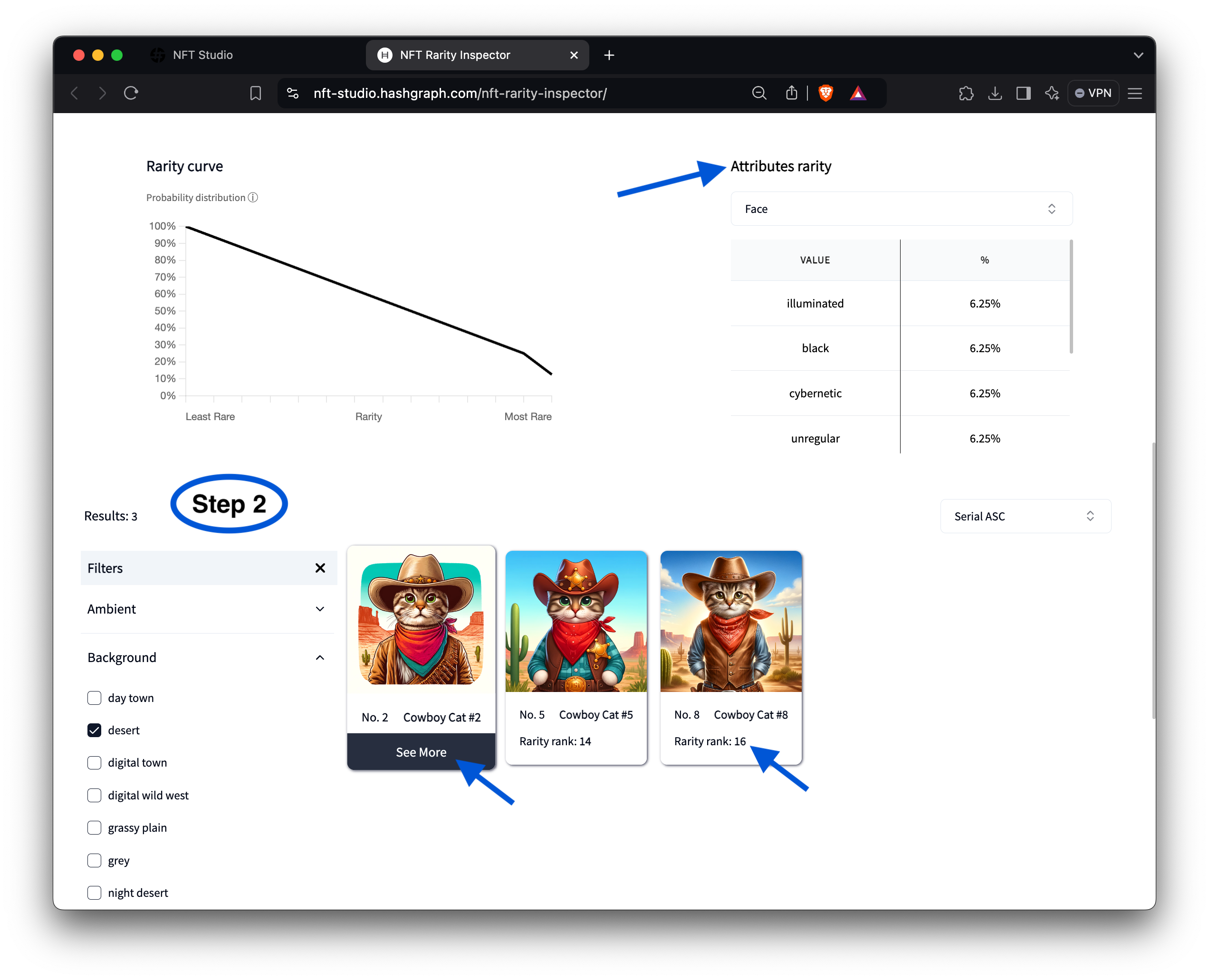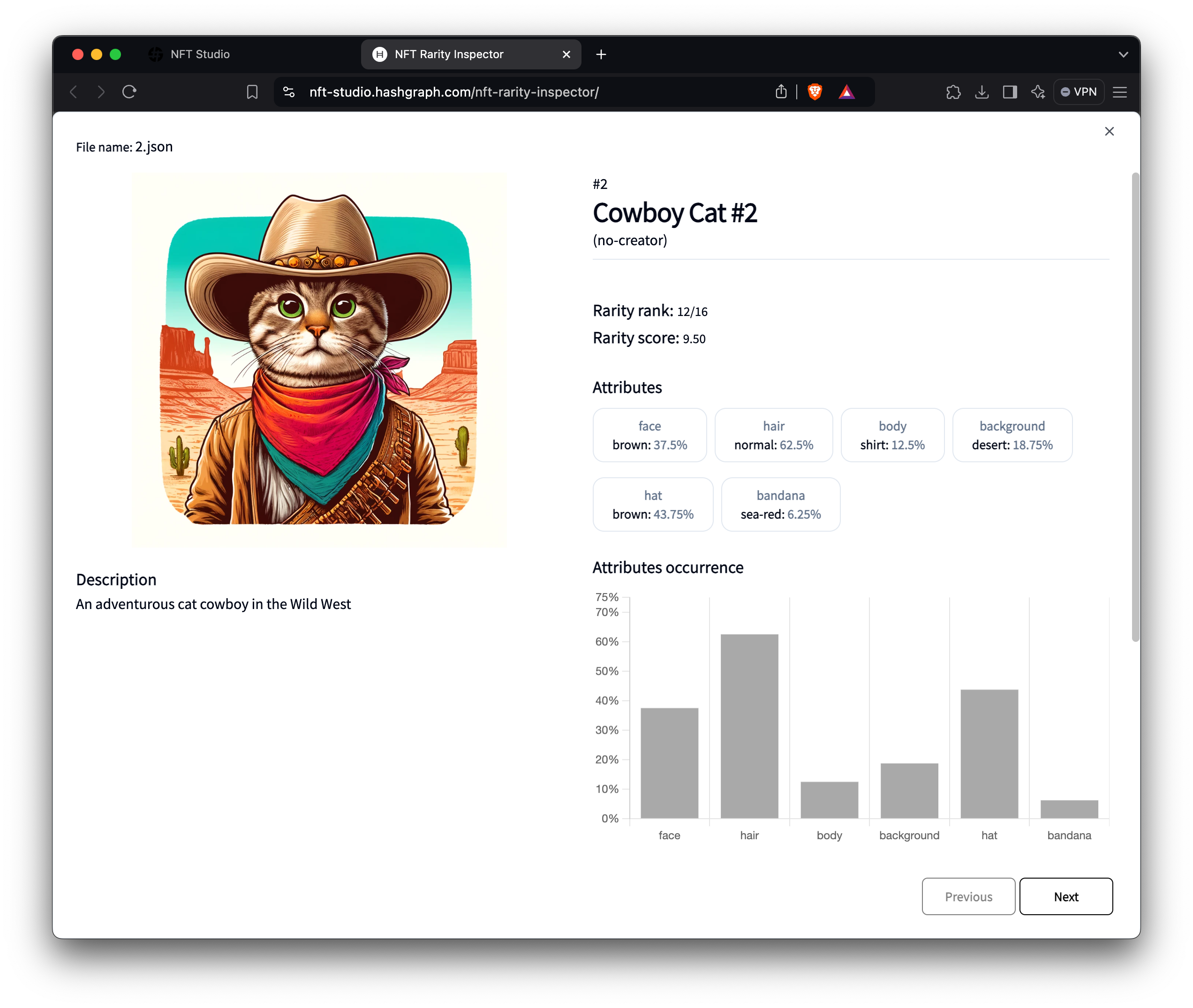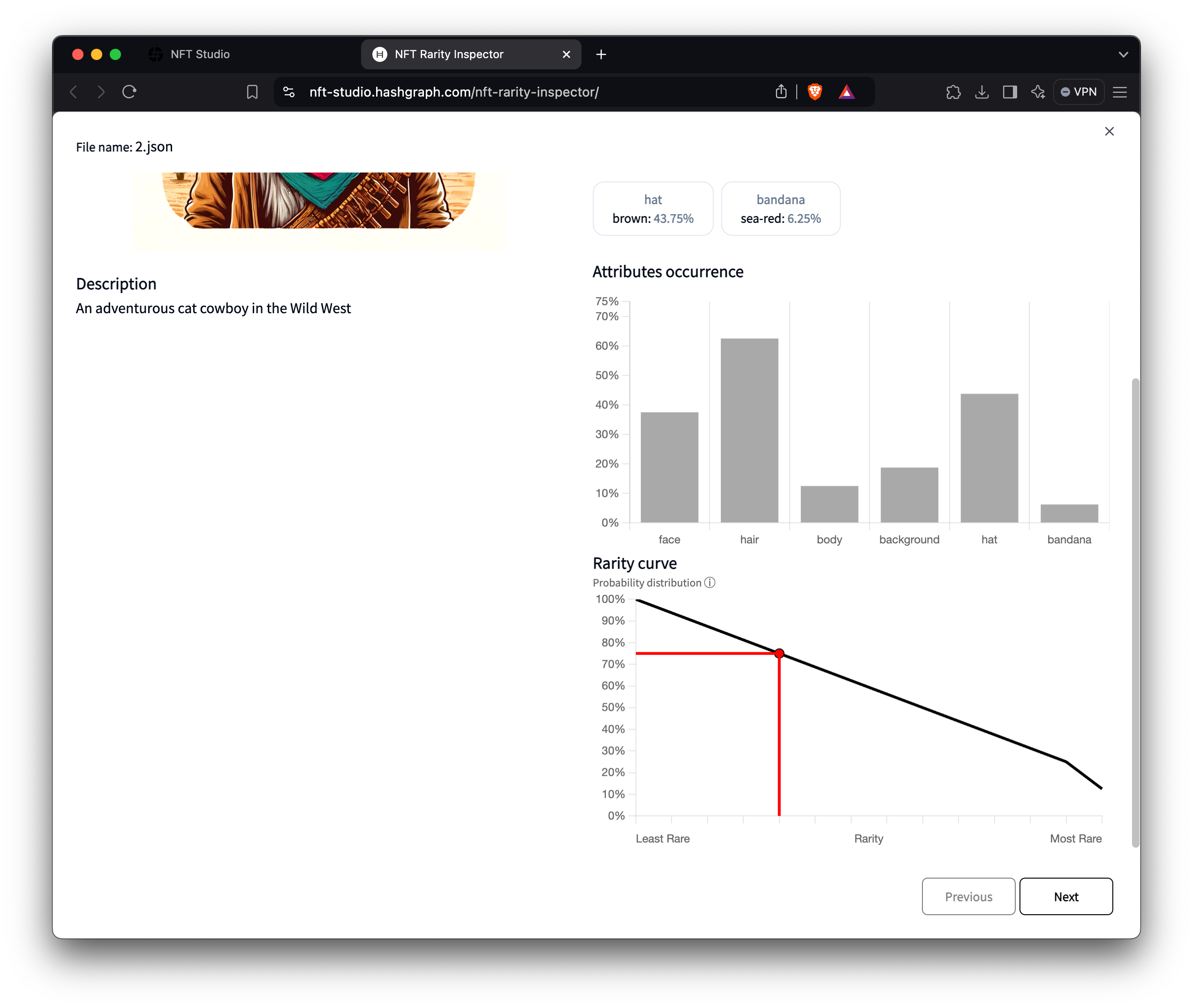.zip file to verify NFT metadata and check for compliance with HIP-412 standards. It calculates a rarity score by analyzing the NFT’s traits, features, and properties compared to the entire collection. Once the inspection is complete, each NFT is assigned a rarity score based on its uniqueness, helping artists, collectors, and traders understand its value. The higher the score, the rarer and more unique the NFT, making it more valuable than those with lower scores.
How to Use the NFT Rarity Inspector
Step 1: Upload NFT Collection File
To follow along, download the example NFT collection.zip file from the Rarity Inspector web app. Once downloaded, upload the collection to the tool.

Step 2: Visualize NFT Rarity, Distribution, and Attributes
After uploading the collection file, the tool will process and visually display its rarity distribution. The visualization will show some key highlights, such as:- The most rare NFT in the collection.
- The most common NFT in the collection.
- The most rare attribute in the collection.
- The most common attribute found in the collection.



Understanding the Results
Understanding the Results
The rarity score generated by the NFT Rarity Inspector provides valuable insights into an NFT’s relative uniqueness and potential value. Here’s how to interpret the results:
- The score typically ranges across a scale, where a higher score indicates a rarer NFT. The value of the score is relative to other NFTs within the same collection.
- Each NFT is also ranked within the entire collection based on its score, giving you an idea of how unique a particular NFT is compared to others.
- The tool offers a detailed breakdown of each attribute and its rarity percentage within the collection. For example, if only 5% of NFTs share a specific trait, that trait significantly boosts the NFT’s rarity score.
Use Cases & Best Practices
Use Cases & Best Practices
The NFT Rarity Inspector is designed to support various stages of your NFT project, from development to sale. Here are some practical ways to use the tool:
- Use the inspector before minting to ensure a balanced distribution of traits and accurately represent any “rare” items in your collection.
- Sellers can use the rarity scores to price their NFTs more effectively, highlighting rare traits to potential buyers and setting competitive prices based on uniqueness.
- Buyers and collectors can analyze rarity scores to make informed purchasing decisions, selecting NFTs that are more rare and potentially have greater resale value.
- Share the rarity distribution with your community to enhance transparency and generate excitement about your collection’s unique aspects.
- Ensure traits are named consistently across all NFTs in your collection for accurate analysis.
- Run the tool periodically as your collection evolves or new items are added to keep rarity information current.
- Include all relevant attributes and properties in your metadata to ensure a thorough analysis and accurate rarity score.

